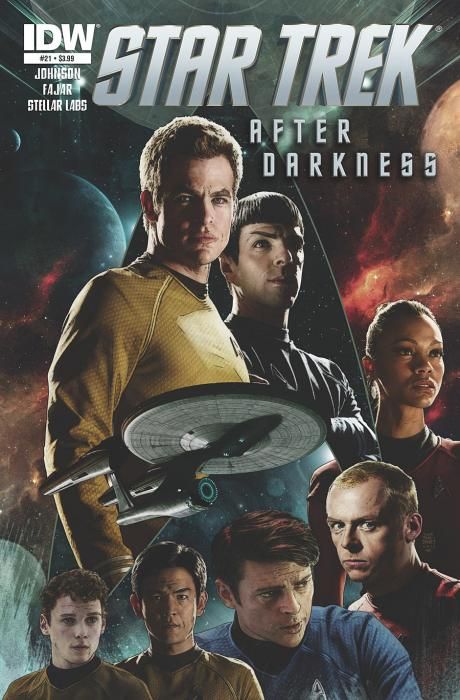"Star Trek" #21 by writer Mike Johnson and artist Erfan Fajar is the first issue to be set after the recent film sequel, "Star Trek Into Darkness" (hence the subtitle, "After Darkness") so it's likely that there will be greater-than-normal levels of interest in the book and its story -- particularly given how the second film ends. Readers could reasonably expect, therefore, that it'd be accessible to new readers and read not entirely unlike a first issue.
Unfortunately, that's a wrong assumption. Speaking as someone who hasn't been following the comic series up until this issue, the opening portion of this book was near-impenetrable. A brief scene on the Klingon homeworld aside, readers are introduced to Kirk as he interrogates a man who was presumably the antagonist of the "Countdown to Darkness" miniseries.
Piecing together the subtext, it seems that this scene is intended to explain how the events of "Countdown to Darkness" square with the events of the movie, but without reading the former, "Star Trek" #21 is massively confusing. Kirk and the un-named man refer to plot points from previous stories, but don't explain their relevance. They spend a large amount of time talking about "Alex" who (I think) is Admiral Marcus from the film, but it's not really confirmed. And there's something about there being two versions of the Enterprise. As openings go, it's once of the most poorly-executed that I've seen from a major publisher in some time.
Beyond that, things don't get a lot better, and there are various oddities which cry out for a more attentive (or assertive) editor. Spock is going through Pon Farr, and Uhura confronts him in his quarters. When he attacks her, she injects him with a sedative (although it's not clear why she had one on her, since she didn't seem to be expecting an attack.) In sickbay, they appear to have taken the extra step of dressing Spock in his uniform while he was unconscious (he's topless in his quarters). By the time the issue reaches its conclusion, it's made several more offhand references to previous stories, but bafflingly, done very little to address the story or themes of the movie it purports to follow.
In fairness, the character dialogue and interactions are natural, on-point and mostly accurate (although Scotty seems a little off, for either version of the character). Despite stiff storytelling typical of books that rely on ultra-realism or photo-reffing, Fajar has the look of the characters and world down, although the influence of colourists Stellar Labs cannot be overstated in realising the glossy feel of Abrams' universe. The problem isn't with the individual moments, but with the glue binding them together. There are three plots in this book, none of which show any sign of tying into the other. Existing readers of the series may be fine with it, but as a Trek fan that came looking for more after the movie, the problem isn't just that I'm not engaged by the story, it's that I'm actively being pushed away by it.

